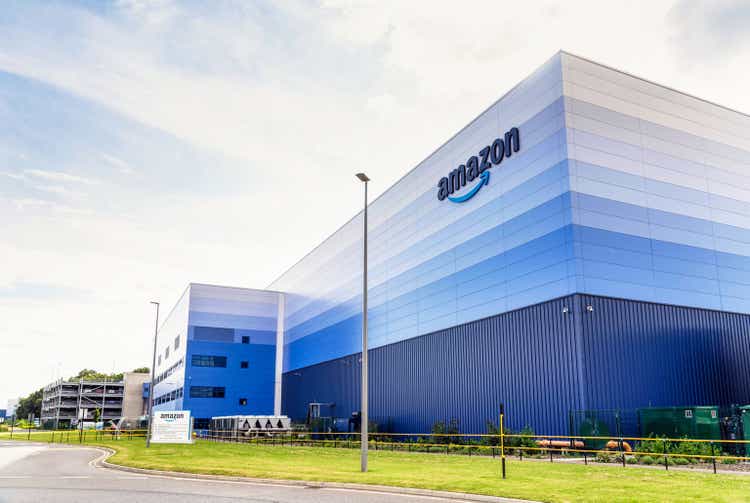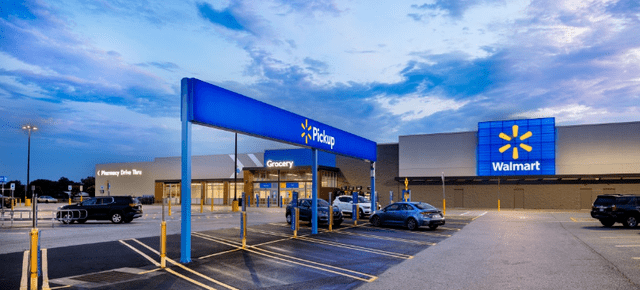georgeclerk
Amazon (NASDAQ:AMZN) has pioneered some of the world’s largest and most profitable industries. The company was an early-mover in e-commerce and is now the undisputed leader in this massive industry. In a bid to improve its e-commerce-related technology deployments, Amazon stumbled into yet another paradigm-shifting technology in cloud computing. In fact, AWS, the company’s cloud computing business, is now Amazon’s most profitable division by far.
Amazon is also ramping up its presence in video streaming. Amazon, along with Netflix (NFLX), was also an early entrant into this high-growth industry and is making big moves to further grow its streaming presence. While Amazon’s business divisions look like a disjointed mess at first glance, they are all highly complementary and is rapidly transforming into one of the most compelling business ecosystems in the world.
Amazon’s Prime ecosystem offers customers access to major benefits across a wide range of industries, from online shopping all the way to video streaming.
The AWS Engine
AWS has transformed from an afterthought to Amazon’s main profit driver over the past two decades. AWS alone accounted for $19.7 billion in revenue at an operating income of $5.7 billion in Q2. While Amazon’s e-commerce business is still the company’s largest by revenue, AWS generates the most profits by far. In fact, it is AWS’ profitability that allows Amazon to take so many risks in other arenas.
As a frequent user of AWS, from storage offerings like S3, IaC tools like CloudFormation, to serverless offering like Lambda, the dominance of AWS is not surprising. The company offers nearly every web service under the sun at highly competitive prices and with great customer service. This is not surprising as Amazon can afford to purchase/manufacture all of its hardware in bulk and has more experience than any other company in servicing its cloud products.
While competitors like Microsoft (MSFT) are making huge strides in the industry, Amazon’s AWS will likely continue to maintain a large foothold in the industry for years to come. This translates into billions of dollars every quarter that Amazon can invest into its other less profitable, but increasingly important business segments like Prime Video or even Whole Foods.
The Amazon Ecosystem
The seemingly disparate businesses that Amazon is investing into are actually vital pieces of a sprawling ecosystem. While AWS offers the obvious in-house benefits of an unparalleled compute platform, which Amazon uses extensively, Amazon’s smaller and often overlooked businesses are also contributing to a thriving and highly synergistic ecosystem.
Amazon’s Whole Foods stores, for instance, have integrated Prime by allowing Prime members to purchase items at a discount. The Whole Foods chain has even incorporated return centers in which Amazon e-commerce customers can return online purchases. By so tightly coupling its online and brick-and-mortar businesses, Amazon encourages more spend on both platforms through convenience and added benefits.
For instance, a Prime member returning an online purchase at a Whole Foods might also pick up some groceries simply because of proximity and/or Prime membership discounts. On the flip side, a customer who takes a liking to Whole Foods may buy a Prime membership just for the in-store discounts it offers. This, in turn, will likely encourage the customer to use (or use with greater frequency) Amazon’s online e-commerce platform given the online discounts offered by Prime.
Amazon’s oft-overlooked Prime Video business offers similar synergetic benefits for Amazon’s business ecosystem. Unlike many of Prime Video’s major streaming competitors like Warner Bros. Discovery (WBD) or even Netflix, money is not a limiting factor. In fact, the recently released Lord of the Rings tv series is the most expensive tv show ever made, with an astronomical price tag of ~$60 million per episode. Although the audience reception to this show has been incredibly mixed to say the least, Amazon’s ability to invest so heavily into its streaming service sets it apart from the majority of the streaming industry.
Prime Video is a strong business in and of itself. However, its ability to complement the Amazon ecosystem is where its true value lies for Amazon. Just like its Whole Foods division, Prime Video offers a great deal of synergistic benefits to Amazon’s great whole. Prime Video alone is a good enough reason for many to subscribe to Prime, which means that many individuals have and will continue to be integrated into the larger Prime ecosystem solely because of Prime Video.
While Prime Video’s current pull is still somewhat limited, Amazon’s huge investments into growing Prime Video (think NFL rights or the MGM acquisition) are likely to pay off in a big way for Amazon moving forward. Of course, Amazon’s e-commerce business still acts as a glue to hold the entire ecosystem together. However, Amazon’s previously niche businesses are now gaining enough attention that they alone can incentivize Prime membership purchases.
Major Competition Ahead
Amazon’s increasingly large business ecosystem also comes with a growing number of challenges, namely fierce resistance from some of the most competitive and well-financed companies in the world. Companies like Microsoft, Walmart (WMT) and Netflix are attempting to claw market share from Amazon with varying degrees of success.
One of the most direct challenges to Amazon is Microsoft’s Azure cloud business, which has experienced a shockingly fast rise over the past few years. In hindsight, Microsoft’s success in cloud is not at all surprising given that the company is arguably the premiere software company in the world. Azure certifications are now almost as in demand as AWS certification for cloud engineers and DevOps engineers. Whereas Amazon’s cloud market share has stabilized at ~33%, Microsoft continues to grow its cloud business at a remarkable rate even at a market share of ~20%.
Amazon is experiencing similar competitive pressures in e-commerce from Walmart. Although Walmart has traditionally been known as a brick-and-mortar play, the company has recently made huge inroads on the e-commerce front. In fact, Walmart holds a distinct advantage over Amazon in that ~90% of Americans live ~10 miles away from a Walmart. Since Walmart’s brick-and-mortar stores act as distribution centers for Walmart’s e-commerce business, the company has a relatively easier time delivering goods to consumers.
While a strong presence in a wide range of industries offers synergic benefits that contribute to a greater whole, such a wide-ranging approach also dilutes Amazon’s attention. On the other hand, most of Amazon’s competitors are far more focused on their few core businesses. Walmart, for instance, is not worrying about maintaining a sprawling global cloud infrastructure. With the exception of Microsoft, which has its own separate ecosystem of software products, Amazon’s major competitors are able to put most of their resources and focus on fewer businesses.
Walmart has put a great deal of pressure on Amazon in recent years by investing heavily into its online business.
Financials
Amazon experienced rough Q2 results, which were negatively impacted by “inflationary pressures in fuel, energy, and transportation costs.” Despite net sales increasing 7% to $121.2 billion, the company experienced a free cash outflow of $23.5 billion. As inflationary pressures subside, Amazon should start to see its financials improve and stabilize.
Despite Amazon’s short-term financial troubles, the company continues to grow its core business at an impressive rate. Per Amazon, “Prime members worldwide shopped more and saved more this Prime Day than any other Prime Day event.” Given the growing value proposition of a Prime membership, from in-store discounts to an increasingly attractive video streaming service, it is not surprising to see Prime membership continue to gain traction despite growing competition from the likes of Walmart.
Conclusion
Competitors like Walmart are building their own ecosystems in an attempt to catch up to Amazon. In fact, Walmart appears to be directly drawing from Amazon’s playbook with its Prime equivalent membership program Walmart+ and its recent partnership with streaming service Paramount+. However, given the headstart that Amazon has in building its ecosystem, it is unlikely that Walmart poses any serious long-term threat to Amazon.
Amazon’s growing ecosystem advantage will be incredibly hard for any other company to truly replicate, especially given the sheer size and scale of Amazon. In fact, the company’s recent acquisition of iRobot seems like little more than a footnote now, despite the fact that iRobot is worth billions. After the downturn over the past few quarters, Amazon’s current valuation stands at $1.17 trillion with a P/S ratio of just ~2.4. This gives investors an attractive entry-point to invest in the underappreciated tech giant.



Be the first to comment